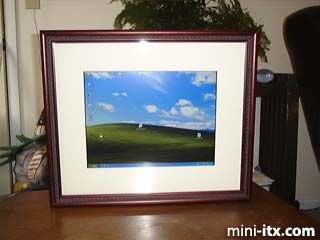When building an electronic project you often want something to move. If you were building a robotic arm, that sure as hell would be boring if it couldn't move, now wouldn't it. You want it to bend like a regular arm and you might even want it to be able to grip things. And then of course you want to put the arm on a moving platform so it can go pinch your collegue's buttocks. So you want the platform to move somehow. All these types of motions require actuators and it is crucial that the right type of actuator is chosen for every job.
First of all we can divide the different types of actuators into electric, gas and fluidic (the rubber band is
not to be despised but I won't cover that here anyway). By electric, I mean powered directly by electricity, not controlled by electricity. Controlling an actuator by electricity is something you can do with almost all actuators.
Let us start with the fluidic ones. In that group we have
pneumatic and hydraulic
actuators. These are most often linear devices and the most common linear device is the piston. A piston works by letting compressed
air (pneumo-) or
liquid
(hydro-) in through a valve. This pushes the piston forward. To make the piston go back, the pressurized fluid is let in on the other side of the piston, pushing it back. Repeat this fast enough and you have a jackhammer.
Another type of pneumatic actuator is the
artificial muscle (you can even
build these yourselves). It is build up of a woven tube which, strangely enough, shortens when filled with air. As it shortens it thickens, thus allowing it to contain more air.
They seem very simple operations but to build a system using any type of pneumatic or hydraulic actuator you also need a pumps (this can of course be an electric motor but I count this as indirectly powered by electricity) , filters,
valves and pipes. This can be quite cumbersome if you are making a small project. Though, since you can store compressed air, you don't need to have the generator in you machine while it is running (if you are running it for a limited time). This is not true for hydraulic systems since liquids are next to incompressible.
The big advantage with fluid system is that by separating the actuator from the power generator, the actuator can often be quite small even though it is very high powered. So even though the whole system is large, the actuator part of it can be very small compared to the forces generated. Also an advantage, if you have a tank of compressed air, it can be released very quickly generating huge forces. And with a closing of a valve, the pressure can be held up thus exerting a force without loosing energy.
Moving over to electric actuators, the most common is, of course, the motor. Turn on the electricity and it starts spinning. Very simple. Of course, when it comes time to choose a particular motor it gets more complicated (brushless or not, AC or DC, torque, gears, etc.) but I'll leave that for another day.
The one thing a motor lacks is an easy way to control its position. To do that you need some sort of feedback (on the axle for example). If you need to know exactly how fast a motor is turning or what angle the axle is at, the stepper
motor is probably the way to go. A stepper motor is a motor with multiple electric coils. By choosing which coils are active at a certain time the motor's position can be controlled very accurately. The downside is that it is not trivial controlling the stepper motor. But it is not that hard either so with a stepper motor controller or some tinkering with a
MCU (microprocessor controller unit - basically a processor and memory in one IC-packet) I'm sure you can handle it. If you are on a budget, cheap stepper motors can often be harvested from used
disc drives (the 1.44" kind, not any new hard drives since they have abandoned the stepper motor).
If you are not interested in continuous rotation and only want to control the angle of a axle, the
servo-motor is very convenient (built into every remote controlled car). It is basically a regular motor with a feedback system built in to it. It is controlled with
PWM-signals (pulse with modulation) which are very easy to
generate. The only problem is that it is very time consuming to generate so you probably have to dedicate one MCU for controlling servos. There are of course ready made servo-controllers if you need to control multiple servos.
There is one more electric actuator that is quite interesting and that is the
muscle wire (also known as flexinol, nitinol and a number of other brand names). It is an titanium alloy that contracts a few percent when heated. So by running current through it (thus heating it) it will contract. Let it cool down and it can be pulled out again. As it won't return automatically, you will need something to pull it back such as another muscle wire or a spring (or maybe gravity is enough, depending on the application). It is hard to build a system more compact than this. It also has advantages such that it is completely quiet.
I've left the gas category and engine to last. If you own a car or if you live in Taiwan, as I do, and have a scooter (13 million scooters on 23 million inhabitants) you should know the basics of the engine; exploding gases, the
Carnot cycle and that kind of stuff. Sufficient to say is if you need much power and your project is an outdoor project an engine can be useful. It doesn't have to be too complicated, just look at all the RC-cars and aircraft with engines. There are engines from one horsepower and up so if you are preparing for the next
DARPA race (or
ELROB 2006 in Germany) you'll probably find something. Your neighbors lawnmower is of course a prime target for a engine on the cheap.
Think I left something out? I know I have; both some more common actuators (
steam engine,
ultrasonic motor,
piezoelectric motor) and some less (
tractor beam). Whatever you are building there is something out there for you, but if you didn't find it here, you have to start looking yourself.
Tags:
DIY,
actuator,
motor,
engine,
pneumatics,
hydraulics,
servo,
muscle,
stepper motor



